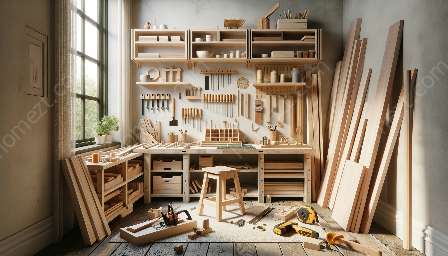Installing new flooring is a rewarding DIY project that can transform the look and feel of your home. Whether you're aiming to refresh your living space or planning a complete home makeover, proper flooring installation is crucial for achieving a polished and professional result.
In this comprehensive guide, we'll cover everything you need to know about flooring installation, including:
- Choosing the Right Flooring Material
- Planning and Preparation
- Tools and Materials Needed
- Step-by-Step Installation Process
- Common Mistakes to Avoid
- Finishing and Maintenance
Choosing the Right Flooring Material
Before starting a flooring installation project, it's essential to choose the right material that aligns with your style, budget, and maintenance preferences. Options range from hardwood and laminate to vinyl, tile, and carpet. Each material has its unique characteristics, benefits, and challenges, so take the time to research and make an informed decision.
Planning and Preparation
Proper planning is key to a successful flooring installation. Begin by accurately measuring the area and accounting for any irregularities, such as alcoves and closets. Consider the layout and orientation of the flooring planks or tiles to ensure a harmonious look. Additionally, it's crucial to prepare the subfloor, addressing any imperfections or moisture issues that could affect the new flooring's performance.
Tools and Materials Needed
When undertaking a flooring installation project, gather the necessary tools and materials to streamline the process. Common items may include a tape measure, saw, adhesive, underlayment, spacers, a rubber mallet, and protective gear. Having the right equipment at your disposal will contribute to a more efficient and precise installation.
Step-by-Step Installation Process
Follow a detailed step-by-step guide to execute the flooring installation effectively. This process typically involves acclimating the flooring materials, installing underlayment, laying the flooring, making necessary cuts, and securing transitions and trim pieces. As you progress, ensure the alignment, spacing, and interlocking of the flooring elements are maintained to achieve a professional finish.
Common Mistakes to Avoid
Be aware of common pitfalls that can compromise the quality of your flooring installation. Examples include inadequate subfloor preparation, rushing through the installation without proper planning, and using incorrect tools or techniques. Understanding these potential pitfalls will help you take preemptive measures to avoid them.
Finishing and Maintenance
Once the flooring is installed, attention shifts to finishing touches and maintenance routines. Properly install transition pieces, such as thresholds and reducers, to create a seamless look across different rooms or flooring types. Establish a maintenance schedule, including regular cleaning and inspection, to preserve the beauty and integrity of your newly installed flooring.
Enhance Your Home with Beautiful Flooring
By mastering the art of flooring installation, you can elevate your home's interior decor and create a space that reflects your personal style and vision. Embark on your DIY flooring project with confidence, armed with the knowledge and techniques required to achieve exceptional results. Whether you're aiming for a cozy, rustic ambiance with hardwood flooring or embracing the versatility of modern, easy-care materials, your flooring installation journey is an opportunity to make a lasting impact on your home.

















































